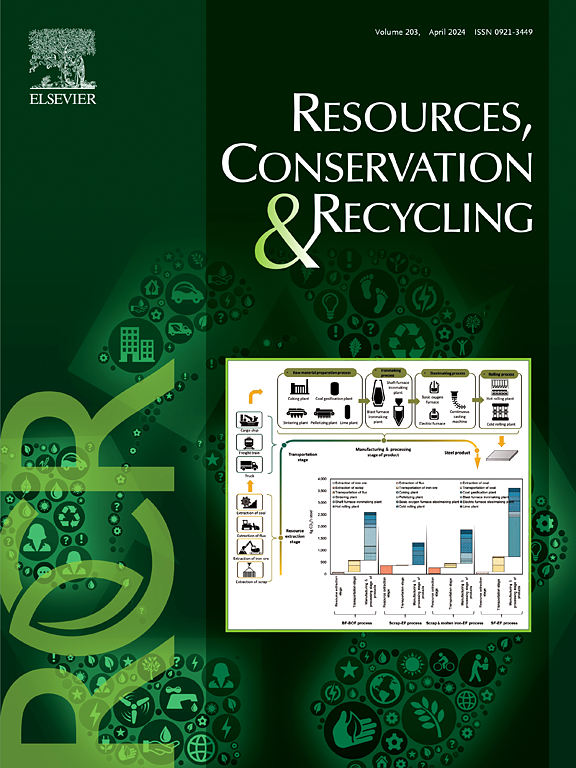Life cycle greenhouse gas emission of pork production in China: Carbon inequality embodied in supply chain
IF 11.2
1区 环境科学与生态学
Q1 ENGINEERING, ENVIRONMENTAL
引用次数: 0
Abstract
Understanding feed formulation impacts and regional carbon transfer is crucial for sustainable pork supply chains. Currently, secondary greenhouse gas (GHG) emissions in the pork supply chain are often overlooked, and regional carbon transfer inequality impedes food sustainability. This study combines spatial equilibrium modeling with life cycle assessment to quantify China's 2021 pork supply emissions. Increasing pig feed crude fiber from 4 % to 10 % raised annual lifecycle GHG emissions from 275.7 to 300.8 Mt CO2eq, driven by 45 % and 13 % emission increases in farming and transportation, respectively. Additionally, carbon transfer among provinces is imbalanced, primarily flowing from southern pig farming regions to northern agricultural provinces. Hunan, Guangdong, and Jiangxi were the top three benefiting provinces, accounting for nearly 27.5 % of the total carbon transfer. Emission burden shifts through interprovincial transfers undermine reduction targets, necessitating strategies like integrating transfer responsibilities into carbon quota systems or compensation mechanisms to ensure equitable mitigation.
中国猪肉生产生命周期温室气体排放:供应链中的碳不平等
了解饲料配方的影响和区域碳转移对可持续猪肉供应链至关重要。目前,猪肉供应链中的二次温室气体(GHG)排放往往被忽视,区域碳转移不平等阻碍了粮食的可持续性。本研究将空间均衡模型与生命周期评估相结合,对中国2021年猪肉供应排放进行量化。将猪饲料粗纤维从4%增加到10%,将使年生命周期温室气体排放量从275.7亿吨二氧化碳当量增加到300.8亿吨二氧化碳当量,这主要是由于农业和交通运输的排放量分别增加了45%和13%。此外,各省间碳转移不平衡,主要由南方养猪区向北方农业省份转移。湖南、广东和江西是受益最大的三个省份,占碳转移总量的近27.5%。省际转移造成的排放负担转移破坏了减排目标,因此需要将转移责任纳入碳配额制度或补偿机制等战略,以确保公平的减排。
本文章由计算机程序翻译,如有差异,请以英文原文为准。
求助全文
约1分钟内获得全文
求助全文
来源期刊

Resources Conservation and Recycling
环境科学-工程:环境
CiteScore
22.90
自引率
6.10%
发文量
625
审稿时长
23 days
期刊介绍:
The journal Resources, Conservation & Recycling welcomes contributions from research, which consider sustainable management and conservation of resources. The journal prioritizes understanding the transformation processes crucial for transitioning toward more sustainable production and consumption systems. It highlights technological, economic, institutional, and policy aspects related to specific resource management practices such as conservation, recycling, and resource substitution, as well as broader strategies like improving resource productivity and restructuring production and consumption patterns.
Contributions may address regional, national, or international scales and can range from individual resources or technologies to entire sectors or systems. Authors are encouraged to explore scientific and methodological issues alongside practical, environmental, and economic implications. However, manuscripts focusing solely on laboratory experiments without discussing their broader implications will not be considered for publication in the journal.
 求助内容:
求助内容: 应助结果提醒方式:
应助结果提醒方式:


